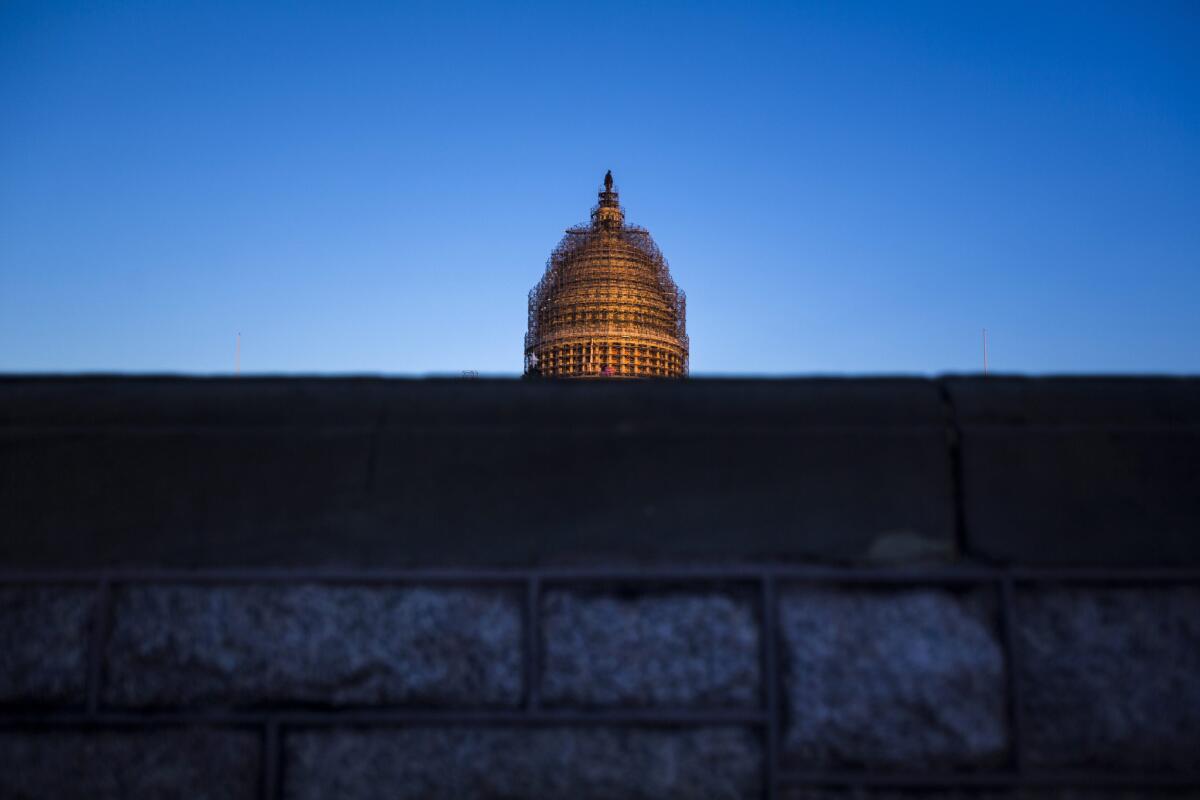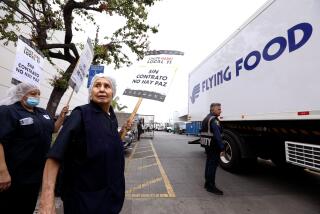Congress poised to allow cuts to private pension payouts

Reporting From WASHINGTON — More than 1 million Americans who were promised secure, predictable retirement income probably will see part of their monthly benefit checks evaporate as Congress moves to stabilize some private pension systems veering toward insolvency.
The expected congressional action to allow previously promised private-sector pensions to be cut is another sign that decades-old assurances that workers were given about retirement income are rapidly fading.
The move comes after San Jose, Detroit and other cities have partially reneged on long-established contracts with government workers and retirees, shrinking benefit checks that were supposed to only increase over time.
Traditional political alliances have fractured as the pension measure — attached to a massive money bill needed to keep the government open — has moved toward a final vote.
Unions are bitterly split. Some are so panicked by the possibility that the entire system could collapse that they have joined with business leaders to implore Congress to act.
“This is the only realistic way to avoid insolvency and preserve as much of the promised pension benefits as possible,” Joseph Hansen, international president of the United Food and Commercial Workers, wrote in a letter to lawmakers earlier this week.
Other unions and retiree groups, including the AARP, have denounced the plan as a betrayal of a promise, enshrined in federal law for four decades, that vested pension benefits would not be cut.
The retirees whose pensions are at stake are mostly blue-collar workers, including mechanics, truckers and construction workers, who participate in what are known as multi-employer pension plans.
The plans were designed to allow workers flexibility to switch companies with ease, guaranteeing them a stable retirement in fields where they were likely to move frequently between employers.
Retirees in all 50 states are affected, although the biggest of the pension plans in danger of collapse is the Teamsters-affiliated Central States Pension Fund, which has some 410,000 participants in the Midwest and South. The average pension for Central States members is $15,000 per year.
Federal officials have warned for years that multi-employer plans covering as many as 1.5 million workers were dangerously unstable. Shifts in the economy have left fewer workers paying into the plans, even as more retirees take money out of them.
Stock market losses during and after the financial crisis of 2008 worsened the problems.
Last month, federal pension officials reported the crisis had escalated, with a high likelihood that not only would the funds go broke within a decade, but the federal insurance program created as a backstop would crash along with them.
“This is the last chance that labor unions and their members have to gain some control over the future of their pensions,” said Rep. George Miller (D-Martinez). A Bay Area liberal, Miller has reluctantly helped push a rollback of federal retirement protections after 40 years of fighting to get blue-collar workers more income.
“This reform would give them the tools they need to rescue themselves,” Miller said during brief debate on the House floor Thursday.
For many workers, the medicine is bitter. The nonprofit Pension Rights Center warns that some workers could see their retirement checks cut by as much as 60%.
Some employees in the private sector have seen pensions shrivel before. Many airline pilots, for example, saw six-figure annual retirement payouts drop to $25,000 when their plans failed amid company bankruptcies. But the scale of the multi-employer plan problem is unprecedented in recent decades.
“These deeply distressed plans are likely to fail without congressional action,” Mary Kay Henry, president of the Service Employees International Union, told lawmakers in a letter. “An insolvent fund cannot pay full benefits.”
By contrast, the Teamsters are demanding Congress retreat. Talking points sent to members Thursday declared “this bill is the ugly side of political backroom dealings.”
At the headquarters of the International Assn. of Machinists and Aerospace Workers in suburban Washington, D.C., union President Thomas Buffenbarger said he was bewildered to see some unions and liberals supporting the plan.
“I was on the phone with [House Democratic leader] Nancy Pelosi earlier this week, and I asked her, ‘Why do the Democrats want to have their fingerprints on this?’” he said.
Buffenbarger said there is an alternative. The federal government could backfill the shortfall at a cost of about $100 billion.
“Let’s measure this against other things the government has done,” Buffenbarger said. “They bailed out Wall Street so those guys can keep their yachts. But we can’t come up with the equivalent to bring solvency to the entire nation’s pension systems?”
On Capitol Hill, however, the idea of a federal bailout is dismissed as impossible. Most Americans no longer are offered the security of a guaranteed pension, and using tax funds to bolster those who are is a political non-starter.
To avoid any need for taxpayer bailouts, private pensions are supposed to be backed by a federal insurance system administered by the Pension Benefit Guaranty Corp., which typically would pay pensions at a reduced rate to people covered by plans that fail. But the fund that insures multi-employer plans is too small to cope with the scale of the shortfall, both sides in the debate agree.
The Employee Retirement Income Security Act, passed in 1974, was supposed to protect pensions. To keep retirement funds from being raided by employers, the law doesn’t allow workers and retirees the option to approve pension reductions.
The plan now before Congress would amend that law and allow members of distressed pension plans to vote on any reductions suggested by their plan’s trustees. Pensioners older than 80 would be protected from any cuts. Those over 75 would have benefits cut less than younger retirees.
“We should give [workers] the opportunity and responsibility of trying to save their own pensions,” Miller said. “These plans are losing altitude every day they cannot make adjustments.”
The problems facing the Central States Fund illustrate the overall picture. In 1980, the fund had four workers contributing money for every retiree collecting payments. Now it has five retirees for every worker paying in, according to congressional testimony last year by Executive Director Thomas Nyhan.
Hundreds of trucking companies that were part of the fund have gone bankrupt, dissolving before paying their share of the pension costs. The recession severely compounded the problem, as the value of the fund’s investments plunged. So did the number of workers paying into the fund, amid widespread layoffs.
With the federal pension insurance program unable to backstop the funds, Nyhan said the 410,000 participants in his pension plan confronted a “stark reality” without some congressional action.
“Even though they were told repeatedly their benefits were guaranteed,” he said, “their pension checks could be eliminated entirely.”
Twitter: @evanhalper
More to Read
Inside the business of entertainment
The Wide Shot brings you news, analysis and insights on everything from streaming wars to production — and what it all means for the future.
You may occasionally receive promotional content from the Los Angeles Times.










